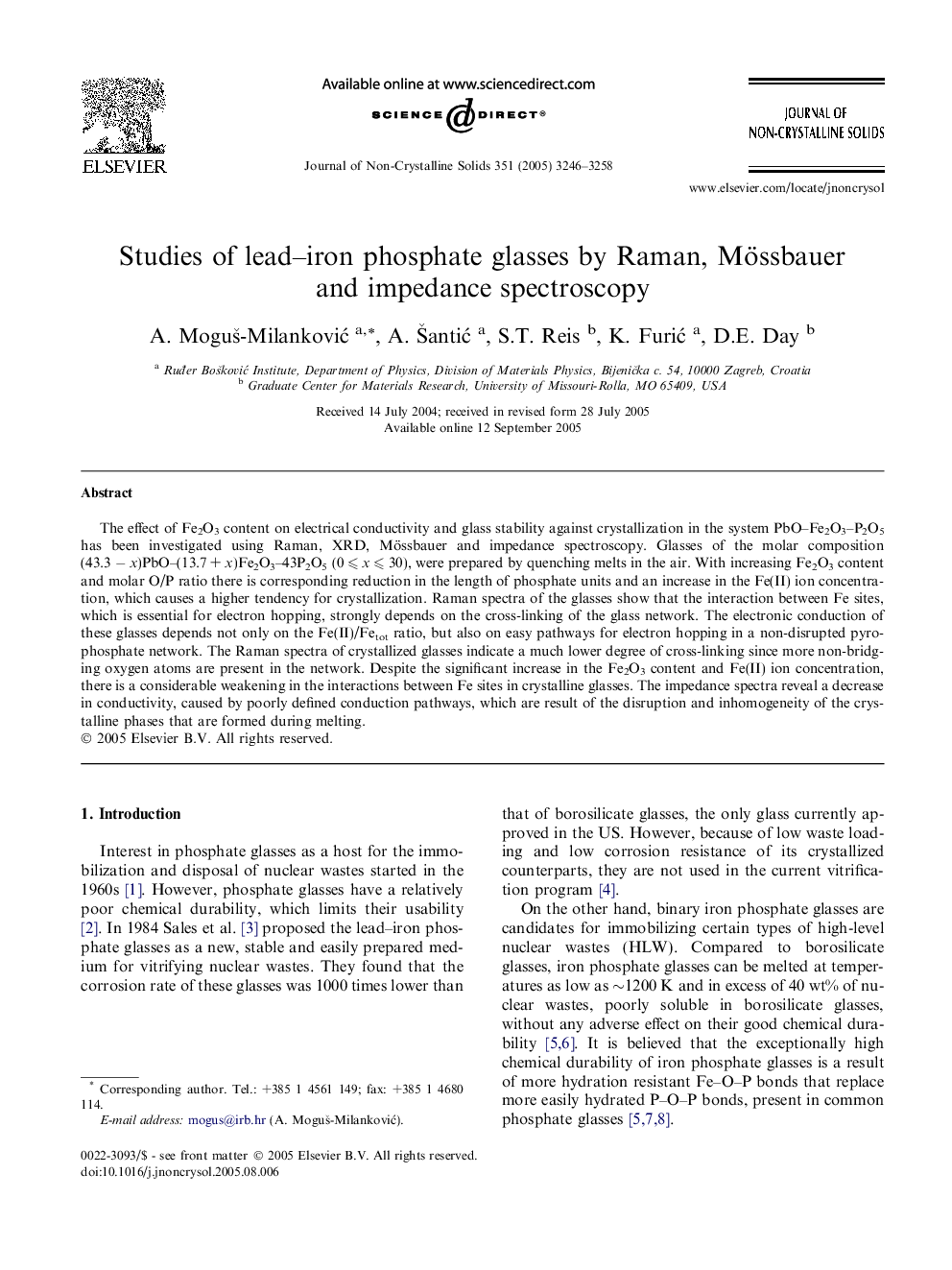| کد مقاله | کد نشریه | سال انتشار | مقاله انگلیسی | نسخه تمام متن |
|---|---|---|---|---|
| 1486658 | 1510562 | 2005 | 13 صفحه PDF | دانلود رایگان |

The effect of Fe2O3 content on electrical conductivity and glass stability against crystallization in the system PbO–Fe2O3–P2O5 has been investigated using Raman, XRD, Mössbauer and impedance spectroscopy. Glasses of the molar composition (43.3 − x)PbO–(13.7 + x)Fe2O3–43P2O5 (0 ⩽ x ⩽ 30), were prepared by quenching melts in the air. With increasing Fe2O3 content and molar O/P ratio there is corresponding reduction in the length of phosphate units and an increase in the Fe(II) ion concentration, which causes a higher tendency for crystallization. Raman spectra of the glasses show that the interaction between Fe sites, which is essential for electron hopping, strongly depends on the cross-linking of the glass network. The electronic conduction of these glasses depends not only on the Fe(II)/Fetot ratio, but also on easy pathways for electron hopping in a non-disrupted pyrophosphate network. The Raman spectra of crystallized glasses indicate a much lower degree of cross-linking since more non-bridging oxygen atoms are present in the network. Despite the significant increase in the Fe2O3 content and Fe(II) ion concentration, there is a considerable weakening in the interactions between Fe sites in crystalline glasses. The impedance spectra reveal a decrease in conductivity, caused by poorly defined conduction pathways, which are result of the disruption and inhomogeneity of the crystalline phases that are formed during melting.
Journal: Journal of Non-Crystalline Solids - Volume 351, Issues 40–42, 15 October 2005, Pages 3246–3258